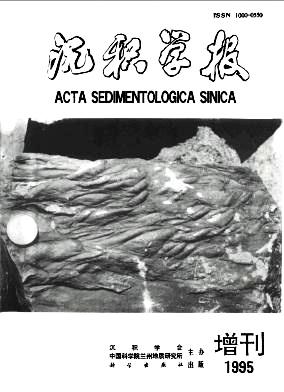A Study on Sequence Stratigraphy of the Huanglong Formation, Upper Carboniferous in Eastern Sichuan
- Publish Date: 1995-12-10
Abstract: The Huanglong Formation, Upper Carboniferous (corresponding to Kinderscoutian-Marsdenian Stage), is one of the most important natural gas reservoirs in Eastern Sichuan. According to the data of rock cores, well logging interpretations and seismic sections, etc., it is considered as a bype I carbonate sequence stratigraphy. The emphasis of this paper is focused on in the distinguishing features of sequences surf actes (such as, SBI. TS. MFS),order dividing or consociation of high-frequency cyclic sequences, sea-level changes and rate of deposition or basin tectonic sinking, etc,. In the formation, there are three cyclic orders can be recognized, which are 48-52 sixth-order.22 fifth-order. 8 fourth-order high -frequency cyclic sequences and 3 megacycles. The sixth-order cyclic sequences were the products of precession Milankovitch rhythms with a time duration of 0. 02 Ma, which were related to high-frequency cyclic sea-evel changes resulted from the Milankovitch cycle. The fifth-order cyclic sequences composed of 2-4 sixth-order cyclic sequences, which were corresponded to the parasequences and may be assigned to three cyclic types,including retrograda tional、aggradational and progradational parasequeces.The fourt h-order cyclic sequences were consisted of 2-4 fifth-order cyclic sequences, which were corresponded to the paasequence sets,developed shallowing-upward sedimentary sequence and bounded by the marine-flooding surface at base or exposure at top of each sequence. These ones may be divided into three genetic types,too,such as retrogradtional-aggradational parasequence sets、retrogradational-aggradational-progradational parasequence sets and aggradational-progradational parasequence sets. According to the association analysis. of the parasiquence sets, these 8 fourth-order cyclic sequences made up of 3 different megacyclic sequences: retrogradational-aggradational megacycle-lowstand systems tract, which was developed in low-part of the formation (C2h1) and bounded by SBI at the base ; retrogradational-aggradational-progradational megacycel-transgressive systems tract, which was developed in middle-part of the formation (C2h2) and bounded by TS1 at the base; aggradational-progradational megacycle -earlier deposition of highstand systems tract which was developed in upper-part of the formation (C2h3) and bounded by MFS at the base and SBI at the top. These megacyclic sequences constituted the low-frequency third-order cyClic depositional sequence in vertical section of the formation, where the later deposition of the highstand systems tract had been eroded by paleokarst during middler-later epoch, Late Carboniferous. It can be estimated, from the rusults above mentioned, that the age of the formation was about 0. 96-1. 04Ma, the sea-level changes were about 3.5 4. 0↓↑(LST) .4. 5-5. 0↑t (TST) anand6. 0-6. 5in 4 (HST) .the depositional rate were about 6. 8-7. 9cm/ Ka (LST).8. 7-10. 4cm/Ka (TST) and 6. 9-9. 9cm/Ka (earlier HST), and the basin tectonic sinking rate was about 7-8cm/Ka. All these evidences suggested that the Huanglong Formation, Upper Carboniferous deputed a carbonate sequence stratigraphy model of shallow stable intracratonic basin.
| Citation: | Zheng Rongcai, Li Demin, Zhang Shaonan. A Study on Sequence Stratigraphy of the Huanglong Formation, Upper Carboniferous in Eastern Sichuan[J]. Acta Sedimentologica Sinica, 1995, 13(S1): 1-9. |






 DownLoad:
DownLoad: